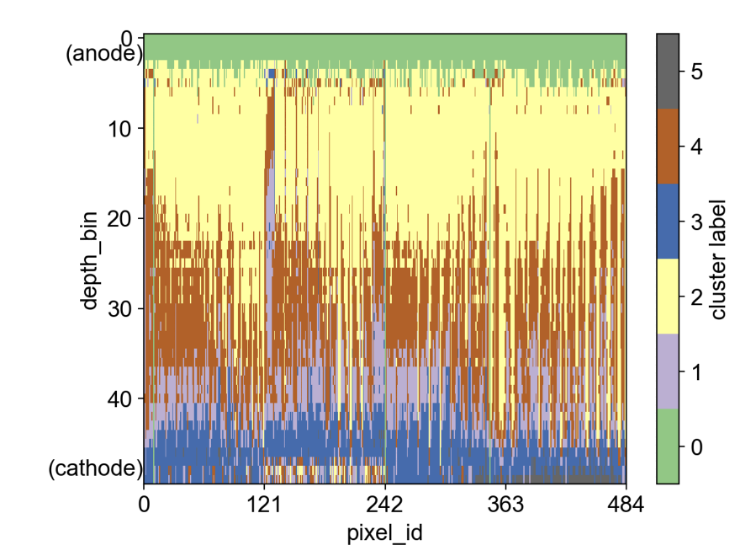Gamma spectroscopy is a crucial measurement technique used by the International Atomic Energy Agency (IAEA) for the nondestructive assay (NDA) of nuclear materials under international safeguards. For decades, many gamma NDA measurements have been made using sodium iodide (NaI) spectrometers. While NaI is cost-effective and highly efficient, it suffers from poor temperature stability and energy resolution. Recently, the IAEA has moved to replace NaI with pixellated cadmium zinc telluride (CdZnTe) detectors from H3D Inc. (Ann Arbor, MI). CdZnTe offers much better energy resolution and temperature stability than NaI, and does not need to be cooled like high-purity germanium (HPGe).
While CdZnTe’s energy resolution is much better than NaI, it can, however, vary substantially within the crystal volume due to natural variations from the crystal growth process. Using gamma-ray data from the entire crystal, including poor-resolution regions, can muddy the signal, increasing systematic errors. Conversely, using only the best-resolution region would sacrifice most of the detector’s efficiency, dramatically increasing measurement times. Also, with over 24000 distinct crystal volume elements (voxels) in each detector system, brute-force optimization of the voxels to include or exclude would take longer than the age of the universe to compute.
Now, researchers from NSD’s Applied Nuclear Physics program have developed machine learning (ML) methods to cluster similarly-performing voxels together and optimize the combination of voxel clusters under a given spectroscopic performance metric.

Optimal cluster labels found by LBNL’s spectre-ml software for a uranium measurement. The optimal measurement uses only cluster label #2.
Figure 1 shows an example clustering result where non-negative matrix factorization (NMF) was used to decompose spectra in different detector regions in a lower-dimensional latent space, and then Gaussian mixture clustering was used to group the 24000 detector voxels into six distinct clusters based on their locations in the NMF space. In this case, the best spectroscopic performance was achieved using only those voxels in cluster #2. The algorithm also performs parameter sweeps over different NMF decompositions, clustering algorithms, total numbers of clusters, and other hyperparameters, and selects the best overall parameter combination according to the chosen metric.

Optimized measured gamma spectra produced by spectre-ml. The “rank 0” curve corresponds to the optimal result of Figure 1, while “rank 1” and “rank 2” show the runner-up parameter combinations. “Bulk” refers to the unoptimized result, i.e., using all voxels.
Figure 2 shows the gamma-ray spectra from the top three parameter combinations, as well as the unoptimized (“bulk”) analysis using all detector voxels. These parameter combinations were selected using as a metric the relative uncertainty in the amplitude of a fit to the 186 keV photopeak from U-235. In this case, the ML algorithm has automatically learned to discard regions of the detector with a relatively stronger 195 keV component, reducing by a factor of ~3x the systematic fit error in the larger 186 keV peak that is used for the NDA of U-235-bearing materials. This improvement reduces the downstream uncertainty in uranium enrichment calculations, which could be crucial for verifying safeguarded nuclear material is not used for nuclear weapons development.
The LBNL team, led by Research Scientist Jayson Vavrek, is currently working with the detector vendor (H3D, Inc.), the IAEA, and DOE/NNSA NA-241 (the project sponsor) to deploy this technology on the detectors the IAEA will use for in-field safeguards inspections. And while the example shown here is specific to the NDA of U-235, the methods are general and could be applied to other optimization problems where tradeoffs exist between including better- or worse-performing datasets. The optimization software, spectre-ml, is available for license through LBNL IPO, and a manuscript on these results is under review at IEEE Transactions on Nuclear Science.
References
[1] JR Vavrek et al., Data-driven performance optimization of gamma spectrometers with many channels, Submitted to IEEE Transactions on Nuclear Science, https://doi.org/10.48550/arXiv.2504.07166
